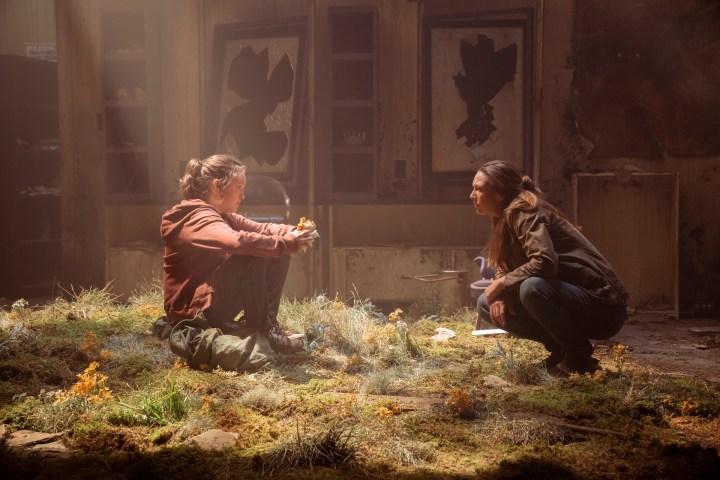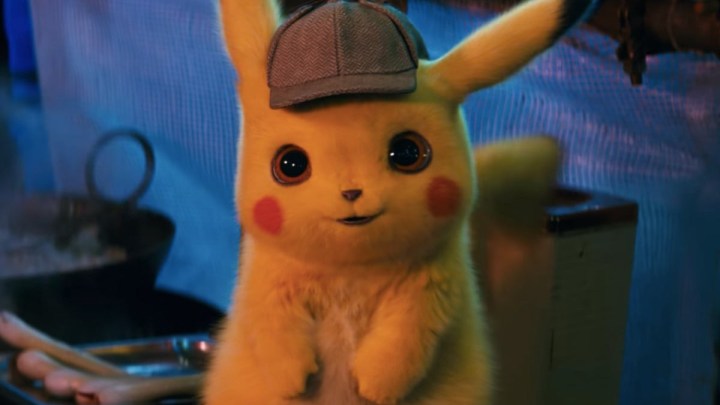There’s a pretty good chance that your favorite video game will be made into a movie or TV show.
Thanks in no small part to efforts by PlayStation Productions and the success of movies like Sonic the Hedgehog and TV shows like Arcane, there will only be more adaptations of your favorite video games coming. We’ve come to a sort-of apex with The Last of Us on HBO, a prestige TV take on one of gaming’s most celebrated titles. It has legitimate stars, a big budget, Chernobyl’s showrunner at the helm, and is raking in viewers. Only three episodes have aired at the time of this writing, but it’s already poised for success, both in terms of viewership and critical accolades.
It’s great for gaming’s reputation as a medium that audiences with no prior knowledge can enjoy one of our most-celebrated games in a way that, so far, generally does a good job of translating its narrative to an episodic, small-screen format. It does prove to people who have not played a single video game that they can tell great stories. For everybody else, adaptations are still struggling to work around what makes video games such a compelling narrative medium: storytelling reinforced by interactivity.
Power struggle
Prior to The Last of Us‘s premiere, showrunner Craig Mazin and The Last of Us co-director Neil Druckmann made the rounds at mainstream outlets touting how it’s the “greatest story ever told” in video games and that it will finally break the video game adaptation curse even though that hasn’t been the case for about a decade now. A lot of the focus has been on narrative, which makes sense because the show’s foundation is built on exact story beats from the game with the promise it’ll expand upon them throughout the rest of the season.
In both the video game and the show, The Last of Us begins with chaos. We’re put into the perspective of Sarah, a Texas teenager who, with her father Joel and her uncle Tommy, tries to escape what becomes known as Outbreak Day. The mysterious infection had been building for a while, causing people to act aggressively, and on Outbreak Day is when it all boils over. Sarah sees lines of cop cars with their sirens blazing and people running around screaming. She gets into the car with Joel and Tommy, and from the back seat, we see things escalate, culminating in a literally explosive set piece where multiple planes fall out of the sky.

In the game, having the player sit in Sarah’s seat instead of Joel’s is a way to take away their control right away. Games are all about control — what you have influence over, what you don’t, and what that means — and putting you in the literal back seat as the world falls apart conveys how dire the situation outside is. Even when you do finally get some semblance of control later in the game, you can’t drastically change your situation. The problem is too large and overwhelming for one person to manage. Even if you can make it through an infected horde, you haven’t destroyed the epidemic. There will be more threats in the future.
Games are especially effective at conveying this kind of terror. Since the player has some semblance of power over the experience, developers can either take away interactivity or increase it to elicit different emotional responses. Where The Last of Us games always shined was in producing a bleak atmosphere to hang over the story, and it does this by taking away the player’s agency during pivotal moments. This opening scene is a great example, so it’s unsurprising that the HBO team would do a shot-for-shot remake for the adaptation’s pilot episode.
However, what even the best video game adaptations miss, either due to the medium’s constraints or ignorance, is how power dynamics go hand-in-hand with a game’s narrative. Storytelling in games isn’t just in dialogue or narration. It factors in interactive elements to tell that story, to convey a point to the player about the world they’ll inhabit for likely dozens of hours. The Last of Us can copy scenes from the game, but that doesn’t mean their resonance will fully translate.
Solving for interactivity
The challenge of a great video game adaptation is finding a way to fill in the gaps that appear when removing the interactive element. That’s a tricky balancing act, as it means directors must find a way to appeal to unfamiliar audiences while paying proper tribute to the source material. Incorporating the “gamey” aspects of video games is tough to do, but some adaptations have been able to do it well.
Detective Pikachu is the gold standard for this. It understands that most people in the audience know how the Pokémon games work and integrates that, whether with visual background gags or major plot points regarding Tim not having a Pokémon partner. The Sonic the Hedgehog movies integrate the core element of its gameplay — that the hedgehog runs fast — while also utilizing its long-running plot and colorful cast of characters. Sonic has never been about its story, but the beats are so established that you can do whatever you want as long as you follow the basics.

Meanwhile, Arcane goes in the opposite direction and removes almost any references to League of Legends gameplay. Considering that the game is almost all gameplay and little narrative minus what you get from character backstories, this was the right move. Viewers still get the joy of seeing familiar faces in an original story. The creators understood that it would be difficult to adapt League of Legends on its own and instead played with what other stories it could tell in the universe.
Another way adaptations have tried to pay tribute to the source material is by honing in on visual influence to varying degrees of success. The Halo TV show filmed portions of its Spartan battles from a first-person point of view in an attempt to replicate gameplay (creating some of the only entertaining aspects of the show’s first season). Halo has a lot of issues stemming from how it created its own narrative away from the games — and doing it poorly with a generic chosen-one story and the subtlety of a rifle to the face — but it also fails to understand what made the games so beloved in the first place. Halo could never have been a faithful adaptation because it shines in its gameplay, not in its narrative or visuals. The show’s team couldn’t successfully figure out how to get around that problem in its first season.
In a way, it’s an impossible task for studios and streaming services to replicate. Movies and TV are static mediums that work to capture imaginations and hold your focus, and video games are very much not. However, teams in charge of adaptations can do better to recognize what makes video games unique and why they’re worth adapting for other audiences. While mainstream media is starting to catch up to what players have known for decades, it’s not enough at this point in 2023. We’re still getting adaptations that miss the most important thing.
The medium is able to combine interactivity, traditional storytelling, gameplay, design, production, art, and everything else to create a singular piece of art that can enrapture millions of players. And it can go further and expand into other mediums, if only others understood this.
Editors’ Recommendations
Stay connected with us on social media platform for instant update click here to join our Twitter, & Facebook
We are now on Telegram. Click here to join our channel (@TechiUpdate) and stay updated with the latest Technology headlines.
For all the latest Gaming News Click Here

